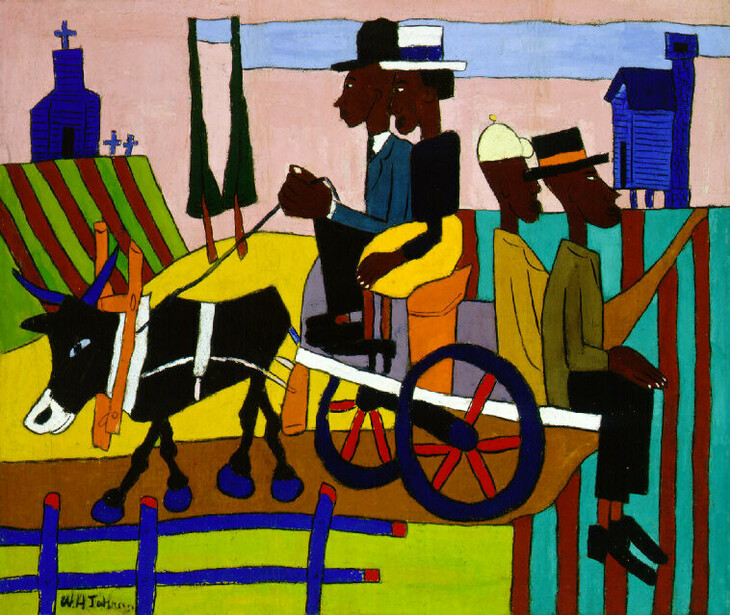
The Formation of an Art Community: Bob Thompson’s Contribution

### Bob Thompson and the Provincetown Artists: A Moment in Postwar American Art
_Bob Thompson, a young Black artist from Louisville, Kentucky, made an indelible mark on the history of American postwar art. By gathering with a diverse group of artists in Provincetown, Massachusetts, Thompson and his friends created a powerful alternative to the dominant art movements of the time. Their significance is being reexamined in “I am Myself: Early Works by Bob Thompson and Friends,” an exhibition at Steven Harvey Fine Art Projects in Manhattan._
#### The Provincetown Summer of 1958
In the summer of 1958, Bob Thompson arrived in Provincetown hoping to meet the renowned artist Jan Müller. Sadly, Müller passed away before they could connect, but the trip had a much more significant impact on Thompson’s career than he could have anticipated. There, he encountered a group of like-minded artists, including Emilio Cruz, Red Grooms, Mimi Gross, Bill Barrell, Jay Milder, Gandy Brodie, and Lester Johnson. Together, they laid the foundation for an important, though often overlooked, chapter in postwar American art.
This gathering of artists coincided with a pivotal moment in the art world. Jasper Johns had just held his first solo exhibition at Leo Castelli Gallery earlier that year, marking a departure from Abstract Expressionism, the dominant movement in the 1950s. Johns’ work signaled the advent of Pop Art and Minimalism; however, many artists, including Thompson and his friends, sought to strike out on their own, developing a more figurative approach while still rejecting abstraction without dwelling in the world of pure realism.
#### A Diverse Circle
The group Thompson associated with during this period was notable for its diversity. At a time when many art collectives in New York were primarily White, Thompson and Cruz (who was Cuban American) introduced a diversity of voices and perspectives that were rare in mainstream art circles.
This collection of artists, mostly based in Provincetown, shared more than just a friendship; they offered alternative paths in modern art practice. They emphasized drawing, figuration, and an engagement with earlier periods of art, including Italian Renaissance and German Expressionism. These concerns distinguished them from contemporaries, who were moving toward more conceptual approaches in Pop Art and Minimalism.
#### Rejecting the Norm
Provincetown provided a different atmosphere from New York City, the center of the art world. The artists who lived and worked there developed individual practices away from the formal constraints of well-funded movements like Abstract Expressionism or the criticism-heavy mode of Pop Art. Thompson, along with the others, chose freedom over assimilation, and this decision had lasting implications for their careers.
Although many from their group would eventually settle in New York, they maintained a discernible distance from the dominant trends, ensuring that their work remained idiosyncratic and personal. Thompson’s role in this group, though not immediately apparent, was central. He maintained his independence from the dictates of any single movement.
#### Bob Thompson’s Rapid Development
Thompson’s output was astoundingly prolific for someone whose life was tragically short—he passed away at the age of 28. Yet in those few years, Thompson continually expanded his practice. His paintings evolved significantly during his early days in Provincetown. In works such as _”Sun Face” and “Portrait of Red Grooms”_ (both roughly made around 1958), Thompson explores abstract shapes with textural brushstrokes, while _”Wilting Flower (The Rose)”_ is a sparse, haunting portrait of a woman, executed with thin layers of paint.
Critics have remarked that Thompson’s works demonstrated how adept he was at absorbing influence from historical and contemporary art, yet he never became purely derivative. His work instead suggests a constant questioning and a fearless drive to expand his vocabulary. At just 21, he told _The Louisville Gazette_, “I cannot find a place nor category in which to put my paintings nor a name to call them.”
This desire to carve out his own artistic pathway parallels his personal decision to remain outside mainstream art narratives. His paintings often feature figures of different colors in various scenes, pointing not to racial integration but to a brand of coexistence—a metaphor of human diversity.
#### Thompson as a Catalyst
The exhibition at Steven Harvey Fine Art Projects hints at a much larger story, one where we are just beginning to understand Bob Thompson’s role as a central figure in this loosely associated group of mostly White artists in Provincetown. Despite their minority representations in art history, these artists’ body of work from the late 1950s to the mid-1960s encapsulates a moment that offered fertile ground for alternative, independent approaches to painting.
It is particularly noteworthy that a young Black artist like Thompson was serving as a central figure in such a group at a time when art circles (like much of broader American society) were wrestling with deep-seated racial divides. In intersections like